ネパール滞在4日目は、郊外の Changu Narayan チャング ナラヤンを訪ねました。少し山道を登り、見晴らしの良い場所ではカトマンズ市街が遠くに見えます。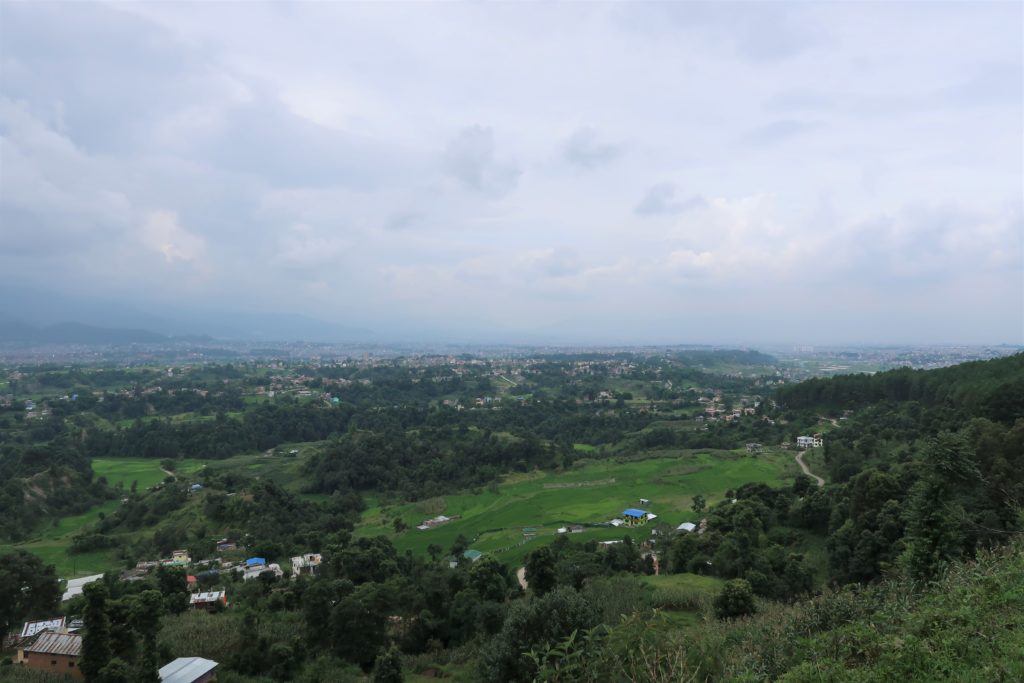 外国人は入場料を支払います。
外国人は入場料を支払います。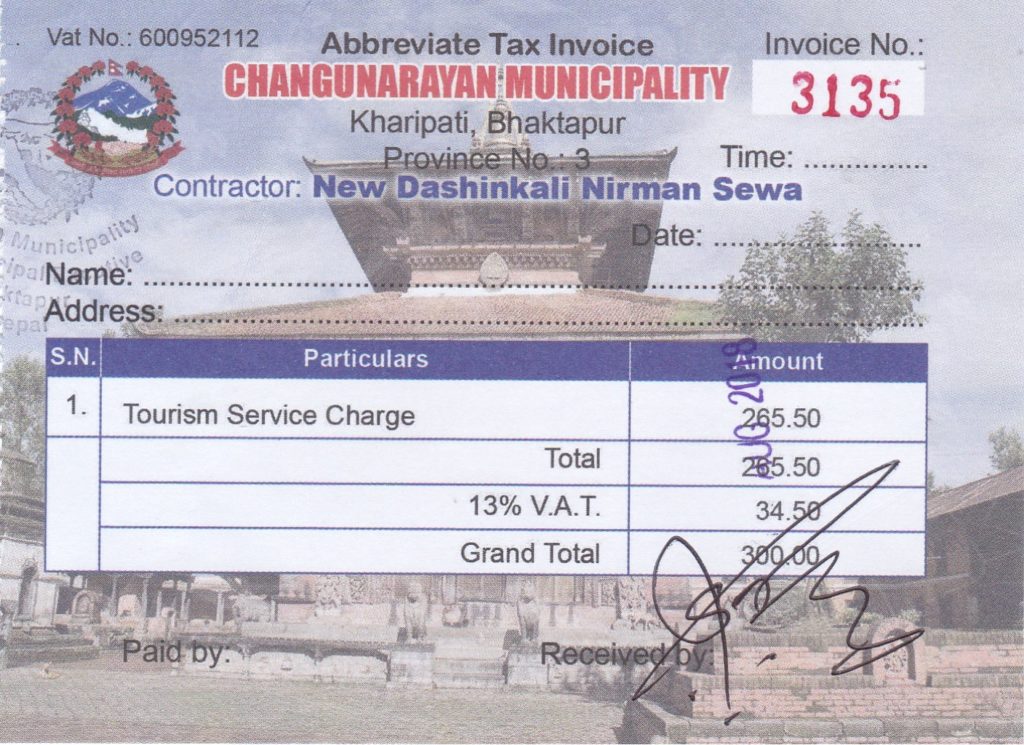 寺院は地震による倒壊は免れ、美しい姿を見ることが出来ます。
寺院は地震による倒壊は免れ、美しい姿を見ることが出来ます。 2層の建物は、屋根の先端の黄金色の Gajura ガジュラ(ガジュール)、そこから垂れ下がるPataka パタカ(Dhvaju ドバジャ)、屋根を支える方丈 Struts(Tundal トゥンダール)の美しい彫刻と、Pagoda style パゴダ様式の建築物の代表の一つです。
2層の建物は、屋根の先端の黄金色の Gajura ガジュラ(ガジュール)、そこから垂れ下がるPataka パタカ(Dhvaju ドバジャ)、屋根を支える方丈 Struts(Tundal トゥンダール)の美しい彫刻と、Pagoda style パゴダ様式の建築物の代表の一つです。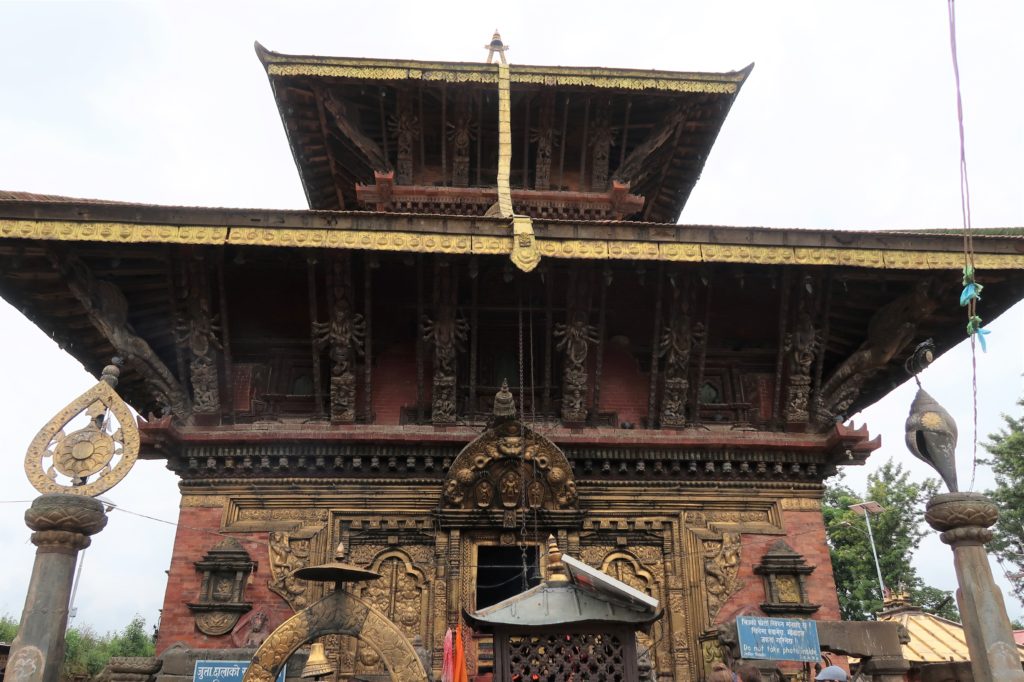
建物の彫刻もいつまでも眺めていられます。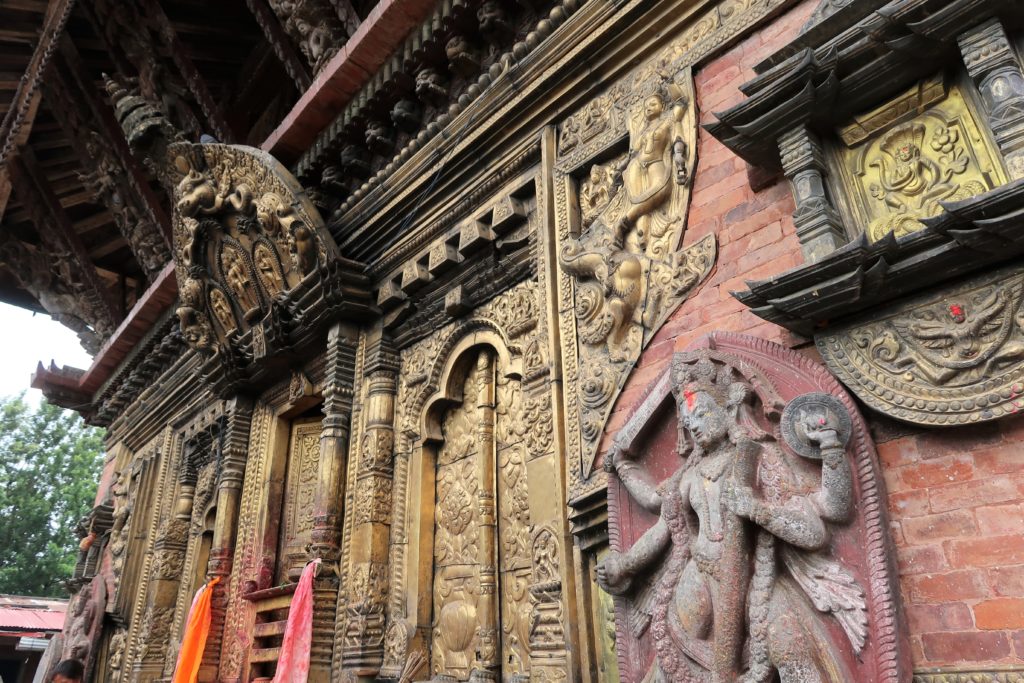 Torana トーラナも金色です。
Torana トーラナも金色です。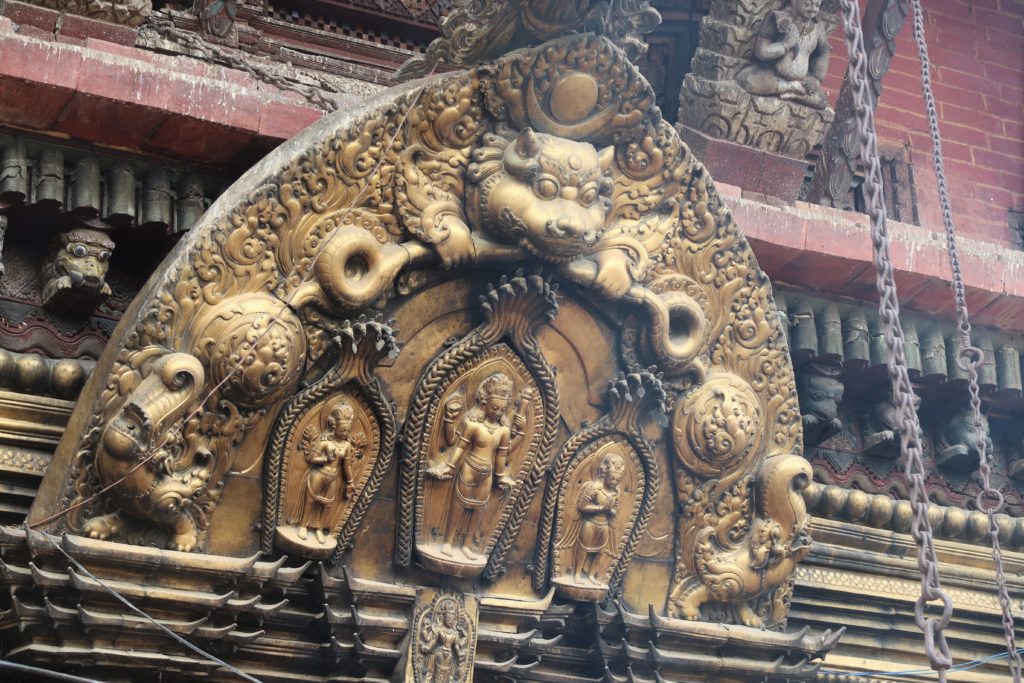 この地域ではこんなに大きな米が収穫できるという、伝説の米粒も側面に見つけることが出来ます。鳩がとまっています。
この地域ではこんなに大きな米が収穫できるという、伝説の米粒も側面に見つけることが出来ます。鳩がとまっています。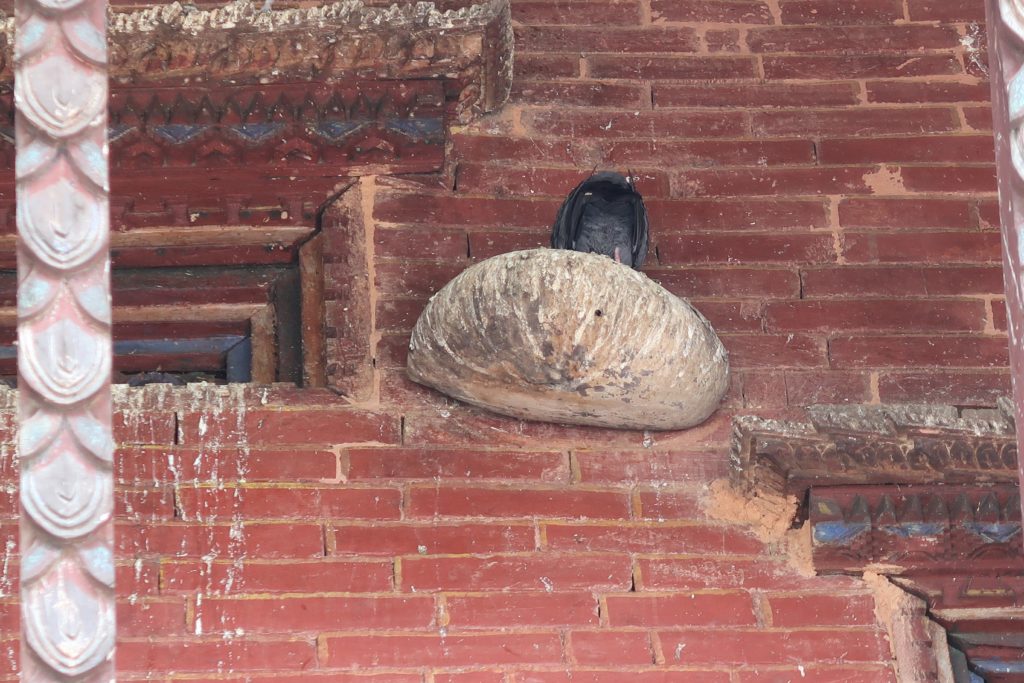 正面にはガルーダ Garuda が跪いています。ESC NEPAL の GARUDA の記事で、この像について説明されています。
正面にはガルーダ Garuda が跪いています。ESC NEPAL の GARUDA の記事で、この像について説明されています。
One of the most beautifully crafted images of the Garuda is the one kneeling in front of the Changu Narayan temple. A close look at the face has made many historians conclude that this is what 5th century ruler Mana Deva must have looked like. Around the neck of the Garuda one can also see a large Naga (divine serpent). Legend has it that Garuda is a solar deity. Garuda’s mother had been made a slave by the mother of the Nagas. The Nagas put up a demand that she will be freed only if Garuda is able to bring them the elixir which gives eternal life. As the story goes, Garuda was successful and on this way back met Vishnu who was very impressed with his honesty in not keeping the elixir for himself and thus granted Garuda eternal life as well, and made him his trusted mount or vehicle. Garuda would henceforth always have a high place in front of all Vishnu temples.
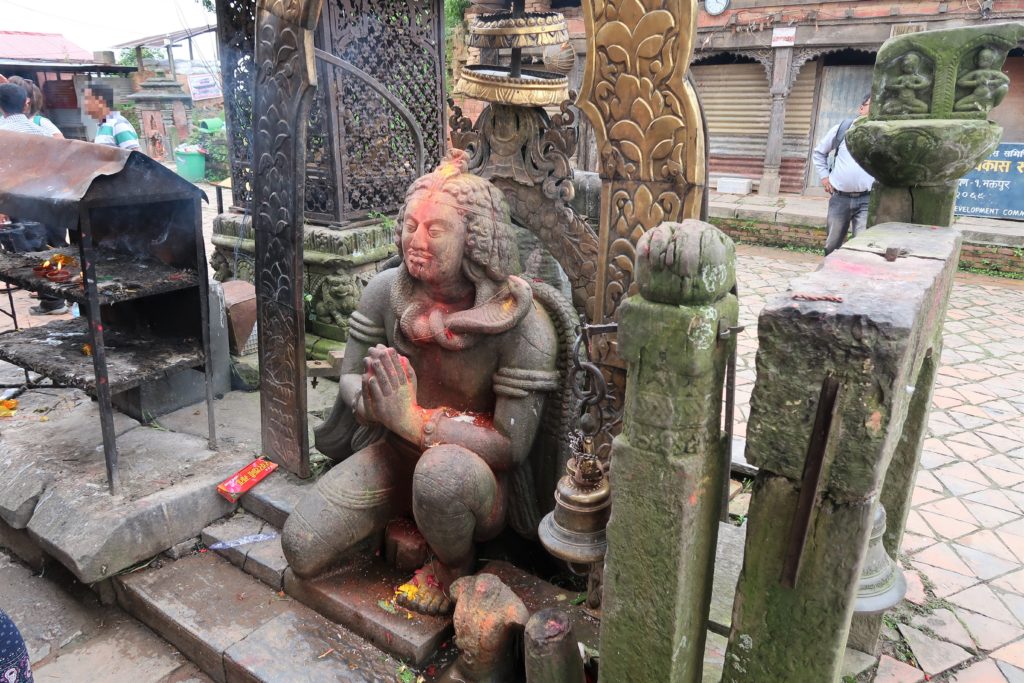
境内にも多くの彫刻が置かれています。10ルピー札にも印刷されている、Lord Changunarayan、ガルーダに跨った Vishnu ヴィシュヌ神の像や、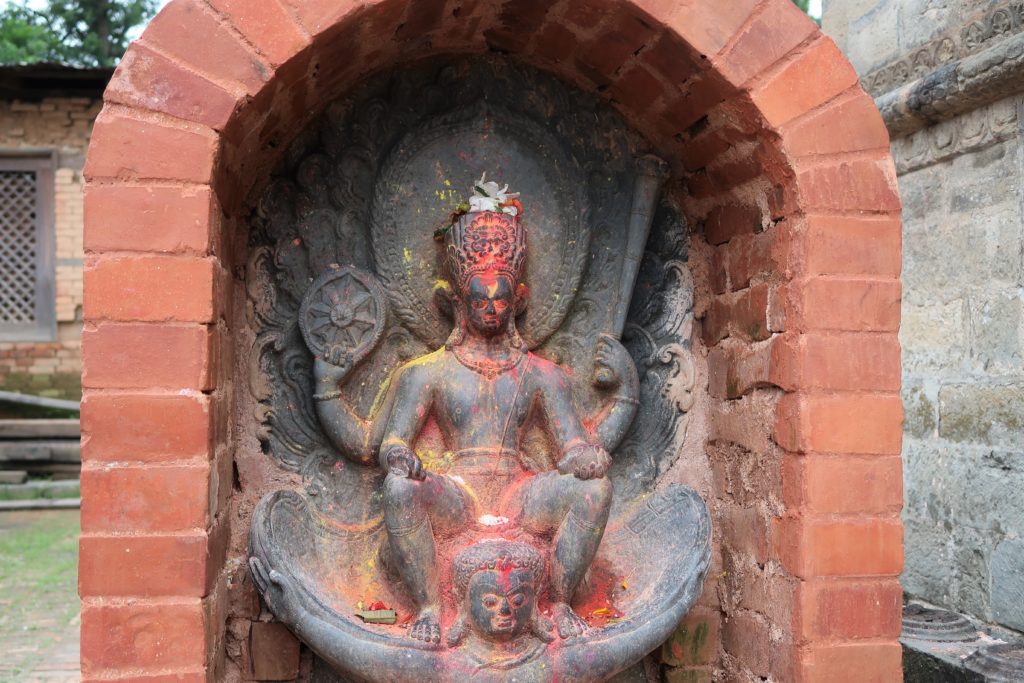
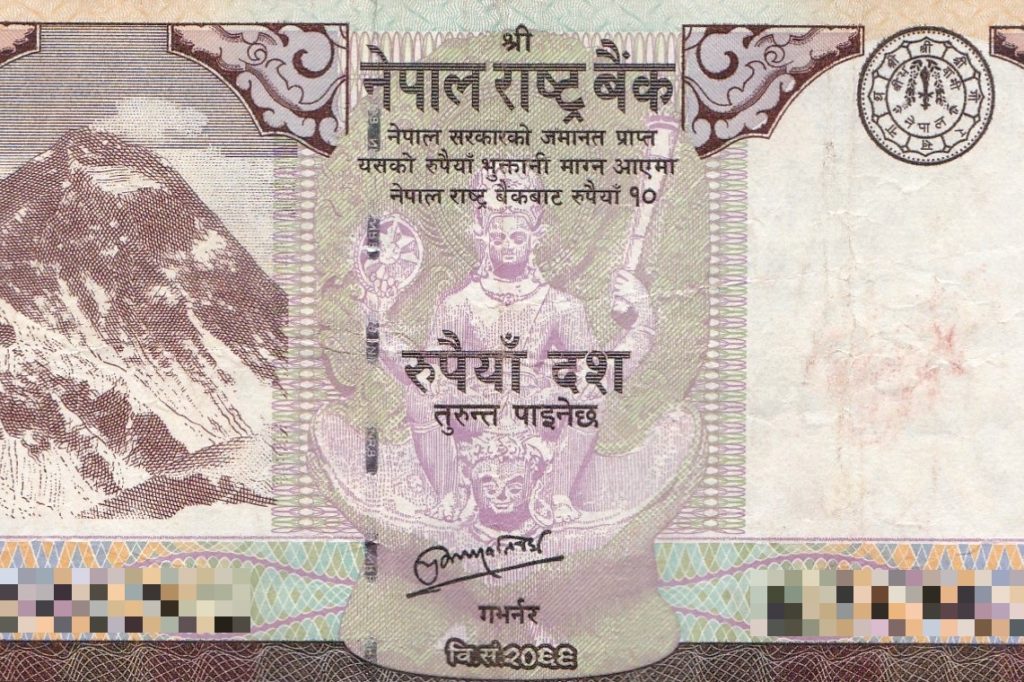 10の頭と10本の手を持つヴィシュヌ像は、ムガール帝国の侵略の際に割られて一部欠けたとの話も聞きます。
10の頭と10本の手を持つヴィシュヌ像は、ムガール帝国の侵略の際に割られて一部欠けたとの話も聞きます。 ネパールで最も古い石碑は464年頃の物との事ですが、刻まれた文字は現代の人には読めないそうです。
ネパールで最も古い石碑は464年頃の物との事ですが、刻まれた文字は現代の人には読めないそうです。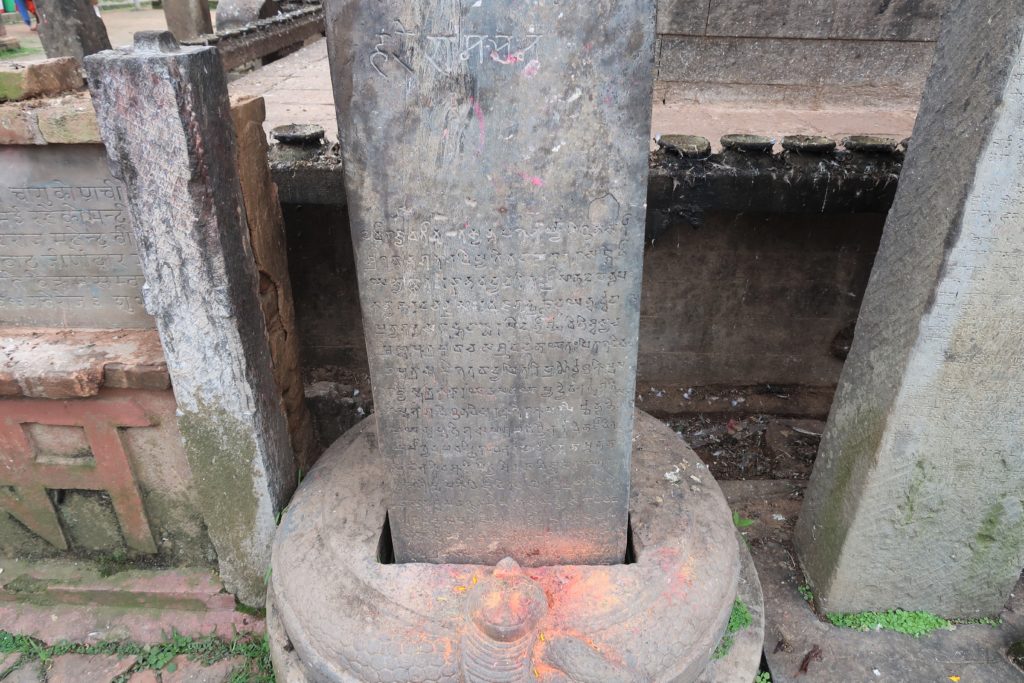 UNESCOが、このチャングナラヤンの震災による破損状況の詳細な報告書を作成しています。震災前の写真と比べることが出来ますが、もともとは境内を取り囲むように2階からなる REST HOUSE (SATTAL) があったようですが、崩落しています。神輿の様なものは難を逃れていました。
UNESCOが、このチャングナラヤンの震災による破損状況の詳細な報告書を作成しています。震災前の写真と比べることが出来ますが、もともとは境内を取り囲むように2階からなる REST HOUSE (SATTAL) があったようですが、崩落しています。神輿の様なものは難を逃れていました。
